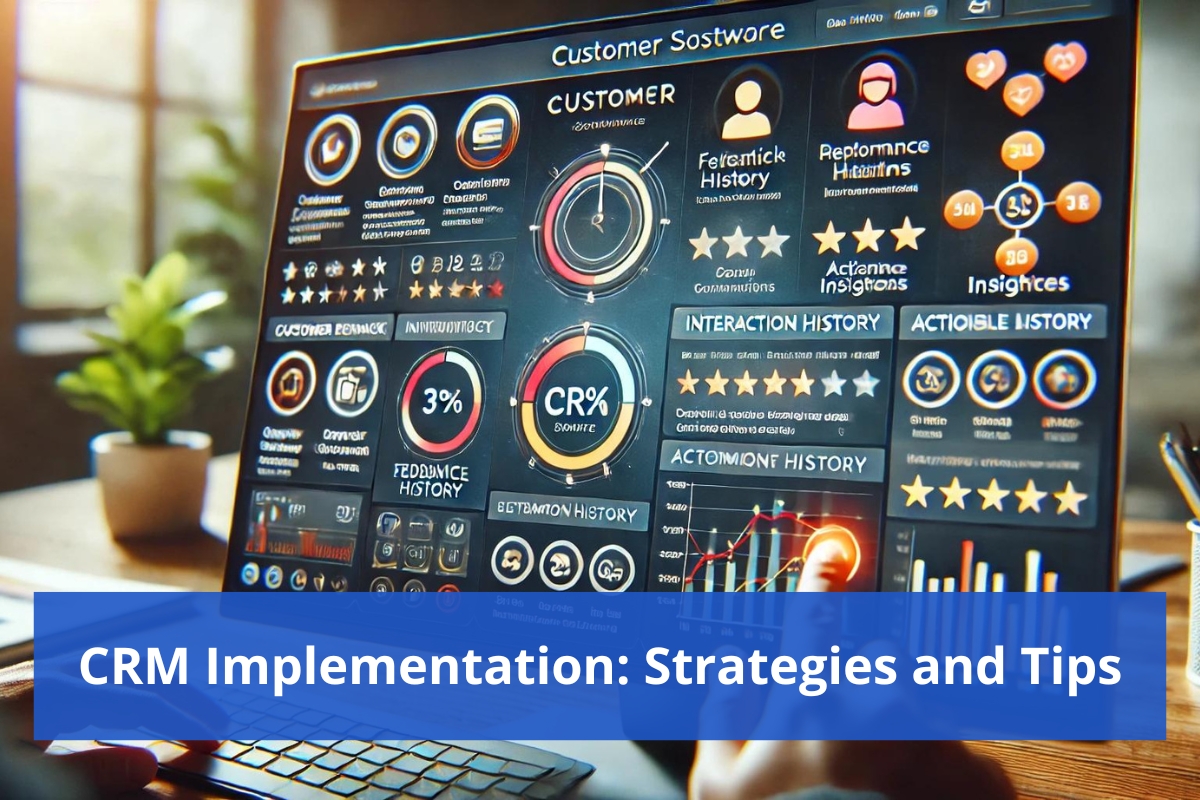Integrating a Customer Relationship Management (CRM) system is one of the most effective ways through which any business can optimize customer relationships, marketing, sales, managing business processes, and business operations. In essence, to harness the full capabilities of CRM software, implementation is cardinal. In the absence of a proper plan, companies will encounter challenges such as user acceptance, data entry, and the receipt of anticipated benefits. This article focuses on the best CRM implementation strategies to help you avoid these pitfalls.
Set Things Straight and Focus on Measurable Goals
The first thing that a user should do once he or she is enrolled into the system is to set up the objectives of CRM implementation. Questions of why come with this new system can arise. Why do we want to implement this CRM?” Whether it is improving customer relationships, increasing sales productivity or driving customer insight, the desired objectives will directly influence the configuration and usage of the CRM system.
Your aims have to be target-oriented and quantitative. For example, one can’t just aim to ‘provide better customer care services’, let us say, ‘decrease the time in responding to the client to three days in six months from now’. These specific criteria set are also meant to assist you in determining the usefulness of the CRM implemented and also adjusting where there is a need to.
Engage Stakeholders in the Process from the Very Beginning
CRM implementations often fail because there’s no buy-in from stakeholders, which explains why it is critical involving all parties concerned from the onset. The sales team, customer service representatives, marketing executives, and IT staff are all included. Bringing in these teams during these activities gives you a fair chance that the system adopted meets their requirements, thus enhancing acceptance.
In addition, it is necessary to nominate a Customer Relationship Management (CRM) champion or project manager who will be responsible for carrying out the implementation plan as well as keeping all stakeholders focused on the objectives of the project.
Determine the Most Appropriate CRM Application
A properly conducted CRM selection phase will significantly determine whether the implementation phase will be successful or not. The simple websites available cover customers with small businesses while advanced ones are appropriate for larger companies. Some of the factors to consider when choosing CRM software include:
- User-friendliness: Ascertain that the CRM is easy and very straightforward for the team since they have to use it so many times.
- Flexibility: Ensure the software can be configured to fit the requirements of your processes.
- Possibility to grow: The client relationship management (CRM) is supposed to get more customers being added to it as the business continues to expand.
- Integration capabilities: A business should check whether the CRM fits well with the operational framework. Your existing sets of solutions, like email, accounting tools, or marketing software, should connect with the CRM.
Plan for Data Backup and Migration
Data migration is one of the most difficult tasks when implementing a CRM. No matter whether you are migrating data from excel or from an old CRM or from an enterprise, it is crucial to have steps as far as data migration is concerned. It helps to begin with a data cleanse process on all active data. Redundant, obsolete, and inaccurate data could create problems when the CRM system is operational
For every data that is clean, you determine what data will be exported or imported into a new database. Even more, ensure that the data is placed into proper place in the new system so that all the information can be easily accessed when the system goes live.
Develop Your Staff Competence
There are great advancements in technology but however consider the intelligent tools like CRM systems, they will not bear any fruit if proper orientation and utilization procedures among staff is not focused on. To avoid unnecessary frustrations with the adoption of the new system, adequate training must take place.
It should also be noted that training does not work for every department in the same way hence the need for staff training to be tailored for the department, its functions and its relations with the CRM. An instance is they may have to learn how to control their leads and record the status of their opportunities while some others may concentrate on the marketing side tracking status of the campaigns and identifying new customers.
It is nevertheless important to reinforce what has previously been taught after sufficient time when your team is more comfortable using the software in particular the CRM application. Such training may be done by way of user guides, online seminars, or by issuing out refreshers at intervals.
Personalize For Your Business Requirements
Most expected the latest version of a CRM has a lot of features, but there is a catch, and that is the need for modifications to cater for the day to day activities of the particular companies. Each sales department can design its own custom fields, dashboards, and reports. For instance visual pipeline of sales deals might be useful for a sales department whereas detailed call reports might be useful to customer service staff.
The reason why you must tailor the application is to improve the worker’s experience and allow this application to be fully integrated into the work processes that every user engages in.
Oversee Outcome and Implement Changes
After the implementation of the CRM, and probably even when it is actively being used, enhancement of its performance becomes fundamental. Periodic evaluation of specific KPIs, sales growth for example, customer satisfaction and lead conversion return, helps in determining whether the CRM is achieving the intended purposes. Should that not be the case, let’s the CRM add more features, train the users more or better enhance the quality of input to the system.
Conclusion
Effective use of the CRM software has the potential of changing the dynamics of managing relationship with customers and organization processes as well. Ambiguous objectives may lead to collection of the undesired group of people and using the wrong software. Integration will be smooth if all these requirements are met. There is also customization and continuous follow up to confirm that the CRM is of continued use in the organization. If these strategies are followed, the organization will be in a position to reap much from the CRM software and also create room for expansion.



